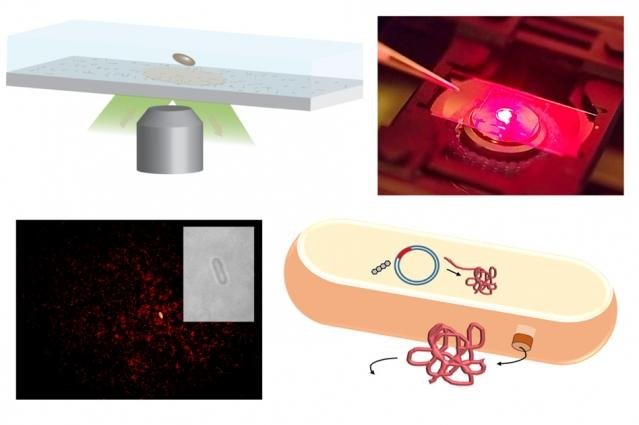The new sensor is made of carbon nanotubes coated in DNA chains called aptamers. Photo by MIT News
Jan. 24 (UPI) -- MIT scientists have developed a new sensor capable of detecting the presence of a single protein molecule. The technology could be used to track viral infections, analyze cellular functions and study other biochemical processes involving small amounts of proteins.
"We hope to use sensor arrays like this to look for the 'needle in a haystack,'" Michael Strano, a professor of chemical engineering at MIT, explained in a news release. "These arrays represent the most sensitive molecular sensing platforms that we have available to us technologically. You can functionalize them so you can see the stochastic fluctuations of single molecules binding to them."
Like sensors Strano and his colleagues have designed in the past, the new array is made up of chemically modified carbon nanotubes. The rings of carbon naturally emit fluorescent light when hit with a laser. Strano and his research partners coat the carbon nanostructures in DNA, proteins or other molecules that bind to a target molecule. When the nanotubes' coating binds with the target, the sensor's fluorescence changes in a predictable manner.
The newest array features carbon nanotubes coated with aptamers, a type of DNA chain. Researchers used a "spacer" sequence to free up each end of the aptamer chains, allowing both the end attached to the sensor and the binding end to function uninhibitedly.
Researchers used the new sensor to detect the presence of a RAP1 and HIV1 integrase, a signaling protein and viral protein respectively. The sensor -- described in the journal Nature Nanotechnology -- is extremely precise and can monitor the protein production of a single bacterial, human, or yeast cell.
"Nanosensor arrays like this have no detection limit," Strano said. "They can see down to single molecules."
Researchers believe the new sensor will aid efforts to better understand disease and develop drugs. The array could even help scientists engineer human cells to produce therapeutic proteins.
"We think these nanosensor arrays are going to be useful tools for measuring these precious cells and making sure that they're performing the way that you want them to," Strano concluded.















